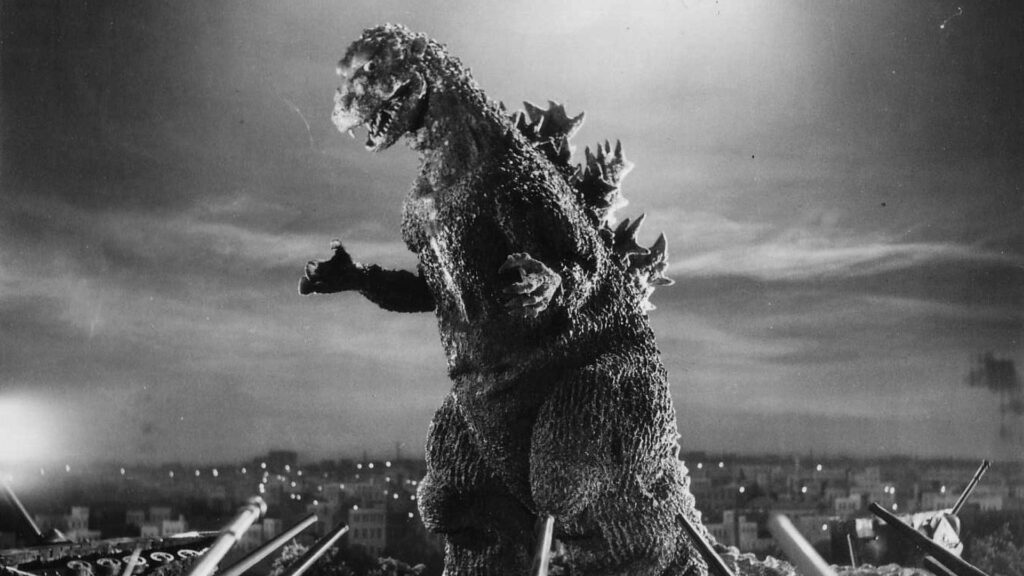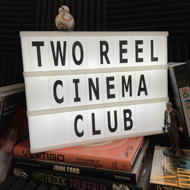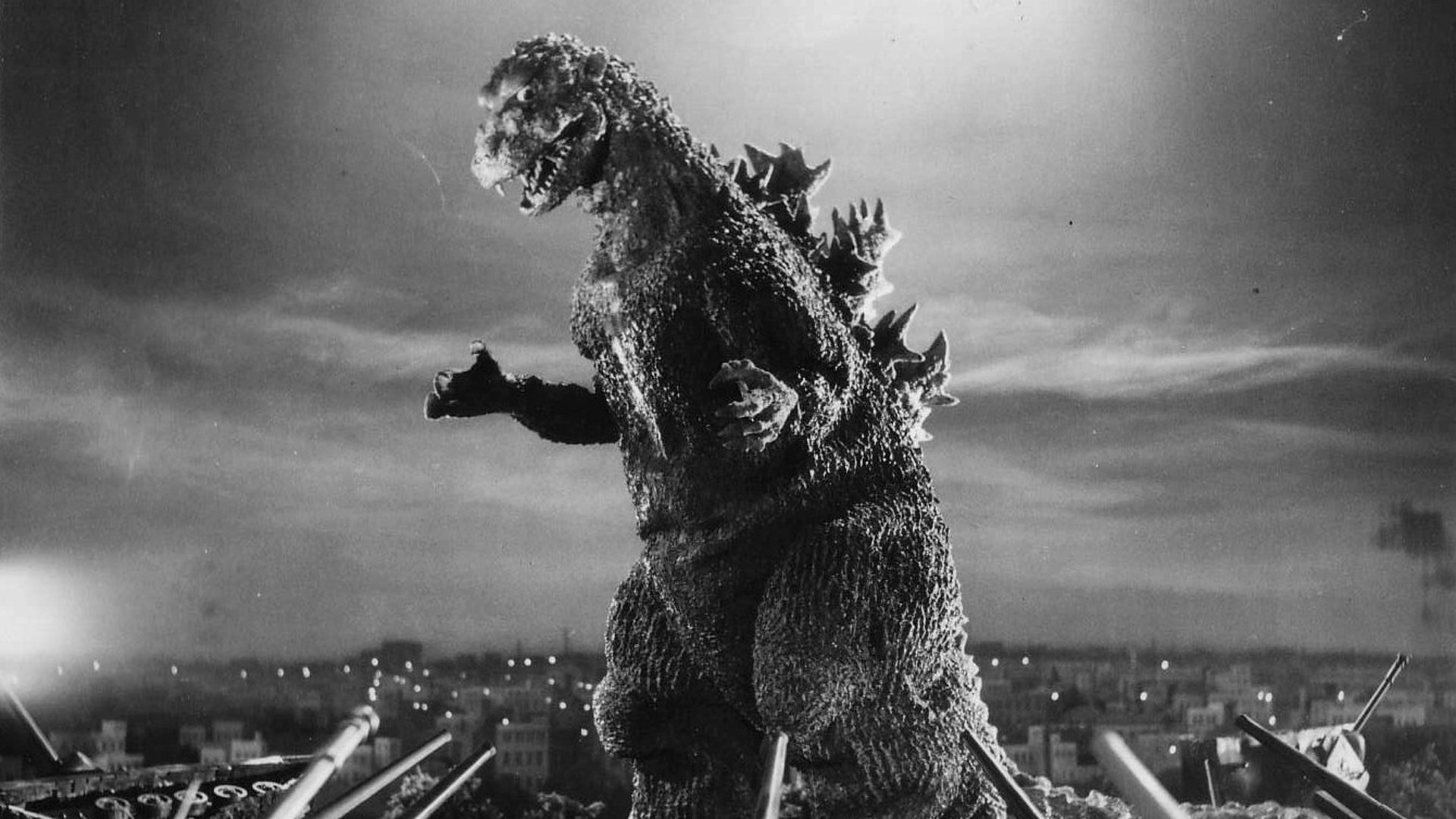
I was sent to review Gojira when it was rereleased in the UK in 2005, by film site FilmExposed.com. I’m looking forward to seeing it again for the pod next week, but in the meantime I thought I’d dig out my old review, below:
….
‘What you see is not a movie. It is utterly bizarre.’ So cries the television journalist in Godzilla, just before the steel tower he is broadcasting from is crushed. His words echo across the story of this most famous of monster movies. Forget what you have heard. Forget what you might have seen on late night television. Especially forget the terrible Matthew Broderick picture. This is the original, 1954 Godzilla, released in its uncut form for the first time in UK cinemas. And it’s about a lot more than a man in a rubber suit.
The film opens with a hydrogen bomb test at sea. As boats disappear and then buildings are destroyed on the nearby Odo Island, scientists arrive to investigate the phenomena. Slowly they realise that the tests have awakened a massive, radioactive dinosaur, which proceeds to terrorise Tokyo until a weapon powerful enough to destroy it can be found.
It is true that the 1950s special effects can seem corny by modern standards, but the tone and subject matter make it impossible to dismiss Godzilla as cheesy light entertainment. Shimura, better known as Kambei Shimada in Seven Samurai (incidentally made in the same year, and by the same studio – Toho), brings subtlety and gravitas to the film in his role as palaeontologist Dr Yamane. And the scenes of devastation following Godzilla’s attack are heart-breaking, most notably when doctors take a Geiger counter to a small child and watch as the needle leaps off the scale. Even the music is a terrifying mixture of old and new – Godzilla’s footsteps played out on huge drums, while strange distorted horns scream over the top.
Additionally, the model making is superb – the sheer scale and detail of the miniature Tokyo made and then destroyed for the film is astonishing. And the electric fence built to protect the coastline is astounding, resembling a massive Futurist sculpture.
A lot has been made of how Godzilla reflects Japanese experience of atomic warfare: the monster is a huge destructive force that devastates indiscriminately. The film was released a mere nine years after the bombing of Hiroshima and Nagasaki, while the wounds were still painful and the radioactivity still present. When characters talk of evacuating Tokyo, one of them comments, ‘Not again!’. And the scenes of the whole city ablaze after Godzilla’s attack would have been shockingly familiar to a nation that could vividly remember its fire-bombing by Allied forces.
And yet Godzilla remains powerfully metaphorical fifty years on. If it were made today, Godzilla would maybe stand for climate change – a different chaos released by mankind’s technological folly. And the images of collapsing skyscrapers would be considered so reminiscent of September 11 that most studios would baulk at shooting the picture at all.
How many films have spawned 21 sequels? The iconic, giant lizard has become a collective Caliban for generations of moviegoers. And now, even after half a century, on the big screen Godzilla remains a force of nature.
JR

